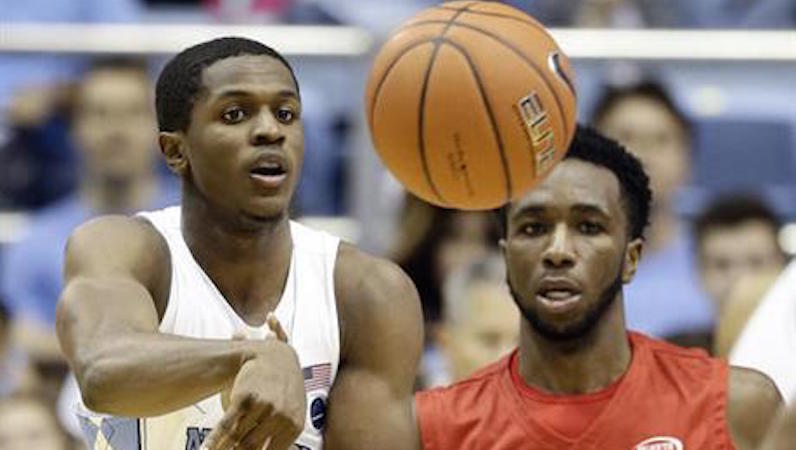News broke last week that North Carolina will likely be without guard Kenny Williams for the remainder of the season; the sophomore injured his knee in a practice following the Duke game. Williams had surgery earlier this week.
What does this mean for UNC — a team with national championship aspirations?
Williams, who started 22 of 26 games and was third on the team in minutes per game (23.7), lost touch with his shot for most of conference play. After shooting 40 percent on three-pointers (nearly three attempts per game) during the nonconference slate, Williams cooled off considerably. The sophomore connected on just 11 of 40 (27.5 percent) triples against ACC opponents.
However, in his second-to-last game of the season, Williams drilled three long-range shots in the win over Notre Dame — perhaps he was beginning to heat back up. Regardless, teams were still defending Williams as a shooter, and that was something UNC could leverage on offense. The Tar Heels were wildly successful in using Justin Jackson and Williams to screen for one another off the ball.
Along with Jackson and Joel Berry, Williams helped form one of the best trios of perimeter shooters UNC has featured in several years. The return of Theo Pinson is obviously a colossal boon for North Carolina, but the junior is a career 29 percent three-point shooter.
When teams left him open, Williams punished them. According to Synergy Sports, he drilled 45 percent of his “unguarded” catch-and-shoot looks — a number that ranks inside the top 30 in the ACC.
Williams was a two-way player, though, and UNC’s defense will feel his absence, too. He is not a multi-positional stopper like Pinson, but Williams drew plenty of tough defensive assignments for the Tar Heels this season. And he never shied away. That included the Kentucky game last December, when Williams was the primary cover for Malik Monk, who went bonkers and scored 47 points on an efficient 28 field-goal attempts. In that epic contest, according to Adrian Atkinson of the fantastic Secondary Break, Williams checked Monk on 40 of his non-transition possessions — a team-high. Williams held him to 50 percent shooting, which is not too bad all things considered, and forced two turnovers.
Williams struggled this season covering isolations and spot-ups. According to Synergy Sports, the sophomore allowed better than 1.1 points per possession against both types of action.
However, Williams managed much better when checking players involved in some form of on-ball screen. Per Synergy, pick-and-roll ball-handlers shot under 31 percent when Williams was the primary defender, which ranks 16th in the ACC among players who defended at least 20 such possessions. Williams was similarly stingy guarding players on dribble handoffs (DHOs) — an action a lot of teams like to use (just watch Duke and Notre Dame). According to Synergy, opponents scored just 0.6 points per possession against Williams on DHO actions. Williams is aggressive and a strong denier of the basketball, which plays well against this form of action.
Basically, Williams carved out a niche in North Carolina’s rotation as a steady 3-and-D player: a low-usage wing (13.3 percent usage rate) who could spot-up around Jackson and Berry pick-and-rolls, while holding his own defensively. The ubiquitous Pinson should replace some of this production while adding his own unique twist of havoc to North Carolina’s rotation. Seventh Woods has quietly improved his game in recent weeks, too, so he could be of service here as well.
Tournament games are on the horizon, and the potential to hang banners looms ahead; losing a scarce resource like long-range shooting comes with a cost. UNC has the depth to prevail, but Williams will be missed.

















